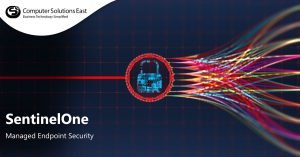Digital Learning and Upskilling New-Age Talent in 21st Century
In the past decade, new technologies such as robots and artificial intelligence (AI) have radically altered the abilities required in the technology sector. On the one hand, these advances obviate specific jobs and arouse concerns about job loss. On the other hand, they provide new possibilities that do not need sophisticated expertise.

Additionally, digital labor portals have resulted in a more transparent labor market. Due to their increased awareness of their worth, top achievers are becoming more mobile; many use the Internet to research new possibilities and assess prospective employers. Additionally, many individuals increasingly search sites such as Glassdoor to discover existing workers’ job happiness, corporate culture, and lifestyle. Businesses that fail to manage their workplace identities and engage their workers properly may find themselves on the wrong end of an increasingly digital battle for talent.
Creating a Digital Mindset
The future is digital, and the so-called “Big Three” technologies — artificial intelligence, cloud computing, and data science — will continue to transform how we live, work, and provide goods and services to consumers. Your primary approach for developing talent must be to instill a digital mentality. From now on, every employee in any industry doing any job will interface with technology to complete their employment. A digital mindset is about assisting your staff in developing the skills they need via a customized digital development project for each employee.
Strategizing Learning and Development Areas
It is time for human resources and learning and development to take a leadership role in effectively aligning talent with the areas with the most significant business effect. L&D must identify its leadership capacity in light of the limitations imposed by its organizational architecture. Job architectures must be rebuilt to accommodate new business processes, activities that transition from humans to intelligent machines must be recognized, and job design must be overhauled to emphasize leadership, critical analysis, and creativity.
Pivoting the Human Talent
As every element of work-life changes, HR and L&D have a special responsibility to play in preserving, recognizing, and rewarding work’s humanity. We have a tremendous chance to instill healthy habits in the workforce that will enable them to perform at their best.
Consistent wellness (physical and emotional), ergonomics, and workplace design will result in a more engaged, healthy, and dedicated staff. For far too long, human resources has shied away from its duty to create optimal work environments. It is past time for human resources to take up this endeavor and concentrate on creating a workplace that meets the requirements of the contemporary worker.
Fitting the Modern Workplace
Choosing a company with a supportive environment that encourages employees to advance their skills and knowledge is preferable. The optimal environment for a team to reach its full potential provides space, time, and opportunity for team members to learn and outgrow functional structure.
We are no longer confined to classroom training; we can now learn on the job and via our mobile phones. The learning culture has also always aided in developing on-demand learning platforms, allowing companies to utilize specialized service providers. The materials and programs are updated continually to learn, following their preferences, duties, and abilities. This type of learning enables employees to improve their abilities proactively with an eye on career development.
Harnessing the Learning Experience for Enhanced Skills
Technological advancements such as artificial intelligence and robots are anticipated to alter job needs and skill requirements. A third (38 percent) of respondents to the Deloitte study said that they intend to lose employment due to automation over the next two years. Ninety percent of respondents said that their organizations are reorganizing their workforces. Around a quarter of C-suite executives surveyed said that they are reskilling their crews.
Another approach is to develop work-based learning programs that assist employees in upgrading their abilities on the job. These programs may include virtual learning through augmented reality devices, easily digestible training modules that can be eaten at the worker’s convenience, or training incorporated into collaboration.
Training and Skill-Based Learning Environment
Advances in technology, such as artificial intelligence and robots, are anticipated to alter job needs and skill requirements. Over a third of respondents to the Deloitte study (38 percent) said they would lose employment due to automation in the next three years. 90% of respondents said that their organizations are rethinking engagement. Around a quarter of C-suite executives surveyed indicated they are retraining their workforces.
Another approach is to develop work-based learning programs that assist employees in upgrading their abilities on the job. These programs may include virtual learning through augmented reality devices, digestible training units that can be eaten at the worker’s convenience, or training incorporated into collaboration.
While established companies may initially integrate digital talent into a flexible satellite structure, they will soon discover that they must undergo a significant cultural change across the corporation. Digitalization cannot be a closed-shop activity; it must extend beyond the accelerator paradigm if sustained throughout the business.
To fully embrace the digital culture, the company must adapt to the new collaboration, including more endeavor work and flexible project management. It must implement new ways of working, such as agile and user-centric product design, more experimentation and innovation, less set rules, and a greater tolerance for risk-taking. Digitally aware employees are often quick learners who want responsibility and influence but will make errors; a culture that embraces failure is critical.
The new attitude should also permeate the workplace, with innovative office design attracting talent and encouraging creativity. At the same time, venture rooms and open workplaces are often associated with startups and the technology sector.


